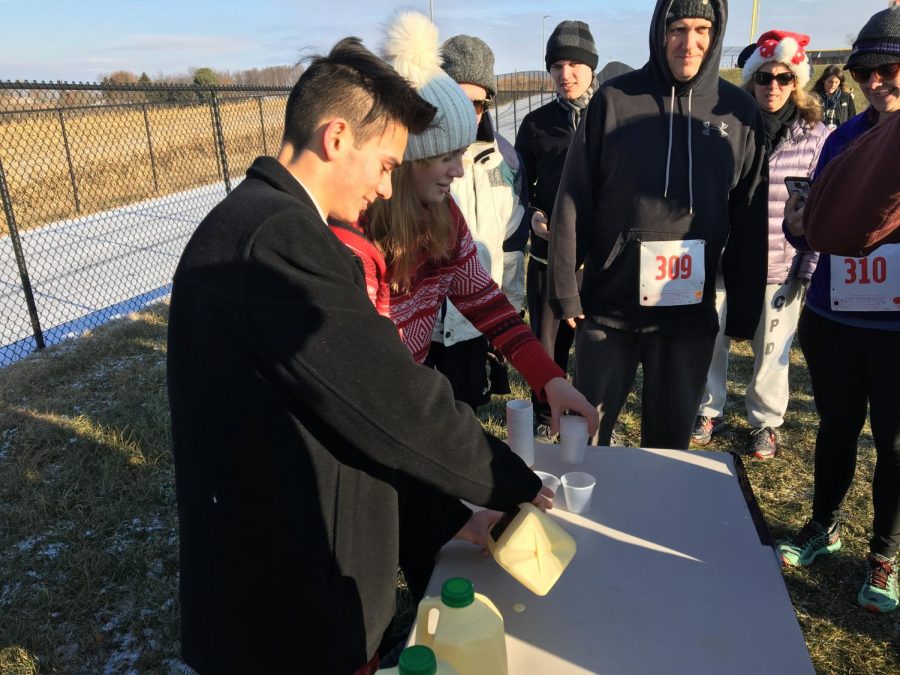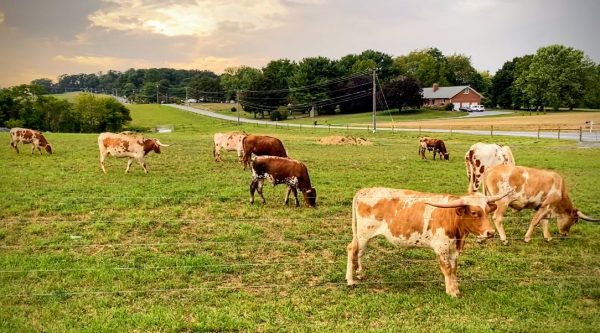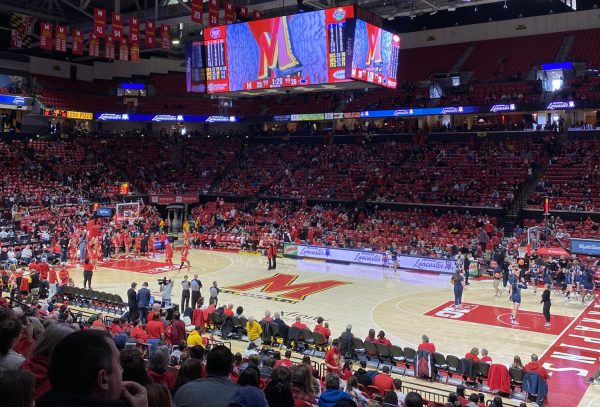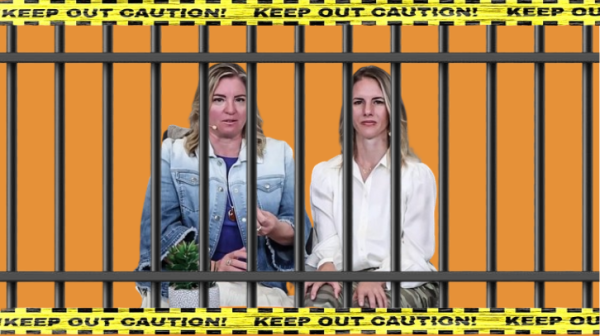Work together, not apart: How to fix the SGA’s biggest problem
Egg Nog Jog Committee Chairs Alex Ismael and Jane Quakenbush pour eggnog for the participants during the event, which is one of the SGA’s largest service projects.
December 18, 2017
Our school’s SGA has been wildly successful. In 2015-2016, the SGA raised $12,171. In the area of community service, the SGA holds blood drives, toy drives, and raises awareness for cancer.
However, the SGA’s largest weakness is the lack of participation in its events.
It is very hard for the SGA to spread the word about events, especially new ones, that it creates. It’s not hard to find the root of this problem. The only incentive to participate in most SGA events is to be a “good person” by volunteering time to help others. Although that sounds like a great reason to participate, sadly, it only gathers a few people, typically the officers of SGA and their friends.
“Unfortunately, it seems like the same few people are the only ones going to events,” said SGA president Jack Dubro.
The incentive problem is not just limited to SGA and clubs have tried different ideas to fix the problem, too. Mu Alpha Theta has tried to increase participation in their events by rewarding those who participated enough with a trip to Hershey Park. However, a reward like a trip to Hershey Park wouldn’t help the SGA increase participation because the current problem comes from a school-wide apathy.
Other clubs, like honor societies, have tried to increase participation by requiring members to complete a certain number of hours/events. This idea works great for honor societies, but it would be difficult to require SGA members to log more hours. This would cut down on the already small SGA participation because members would not want to commit to a requirement.
The best way to increase SGA participation is make a school-wide executive board made up of representatives from each club. Each club would report their planned meetings and progress at the SGA meetings. By communicating what events they plan to do, clubs could be aware of the other events going on in the school and could band together to make sure every club has adequate participation in their events. This would help events like the Egg Nog Jog enjoy the success Lancer Candy Lane has.
Although the comparison of Lancer Candy Lane and Egg Nog Jog is slightly unfair because Lancer Candy Lane is organized by adults compared to the student organized Egg Nog Jog, the high schol student group participation rate can still be compared. Lancer Candy Lane has far more student volunteers and participants than Egg Nog Jog because more clubs assist in helping it, which leads more people to know the event is happening.
“I think the creation of a school-wide executive board is a good idea. Many clubs do the same events as each other. This new group could help consolidate these little events into one big one, which would increase the effectiveness of the events,” said National Honor Society President Joel Tate.
If all events were like this, they would be much more successful and enjoyable. As a senior, I won’t be able to see this plan come into fruition; but I, along with the other leaders, know that a larger and more powerful SGA will fix many issues in our school.













